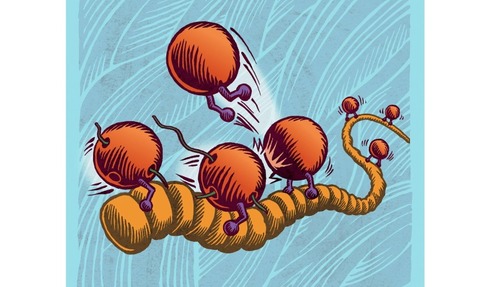'Exotic' virus replication mechanism discovered
11 Dec 2014

Researchers at the University of Utah have discovered a ’likely and exotic mechanism’ which could explain the replication of viruses such as Ebola, measles and rabies.
The Utah team conducted more than 20,000 computer simulations of the livestock virus known as vesicular stomatitis virus (VSV) - a member of the nonsegmented negative sense (NNS) RNA virus family which is closely related to Ebola, measles, rabies and the respiratory syncytial virus (RSV), which commonly affects children.
“This is fundamental science. It creates new targets for potential antiviral drugs
Lead author Saveez Saffarian
Preliminary findings published by the research team suggest the ’exotic mechanism’ may be a possible target for new medicines.
“This is fundamental science. It creates new targets for potential antiviral drugs in the next five to 10 years, but unfortunately would not have an impact on the current Ebola epidemic in West Africa,” said Saveez Saffarian, senior author of a new study published today in the journal PLOS Computational Biology.
Researchers found that once an NNS RNA virus infects a cell, enzymes called polymerases ’slide’ along a protein bead-covered viral RNA strand until they reach the correct end of the strand (see image).
From there, researchers said the polymerases can read and ’transcribe’ the RNA code to synthesise messenger RNA, or mRNA.
Once one polymerase starts that process, it collides with other ’sliding’ polymerases, effectively kicking them loose within the cell until they attach to the correct end of the RNA and start making copies.
That lets the virus replicate and take over the infected host cell, the researchers said.
“The proposed sliding mechanism is a fundamental new mechanism specific to the NNS RNA viruses that can be a target for antiviral drugs in the future,” Saffarian said.
Some RNA virsuses, such as Ebola are known more commonly as NNS RNA viruses, the researchers said.
“The replication machinery of the Ebola virus is not fully understood because it has not been possible to reconstitute replication of Ebola in the lab,” Saffarian said.
“It’s biochemically difficult. But the fundamental mechanism of replication has been shown to be almost identical to a well-studied animal virus, VSV, which infects and causes bleeding mouth and udder ulcers in cattle, horses and pigs.”
Saffarian said the discovery of such a mechanism is “as fundamental as understanding the workings of HIV protease” - an enzyme essential for replication of the AIDS virus, and that became a target of protease inhibitors, which first made it possible for AIDS patients to live with AIDS as a chronic rather than deadly disease.

